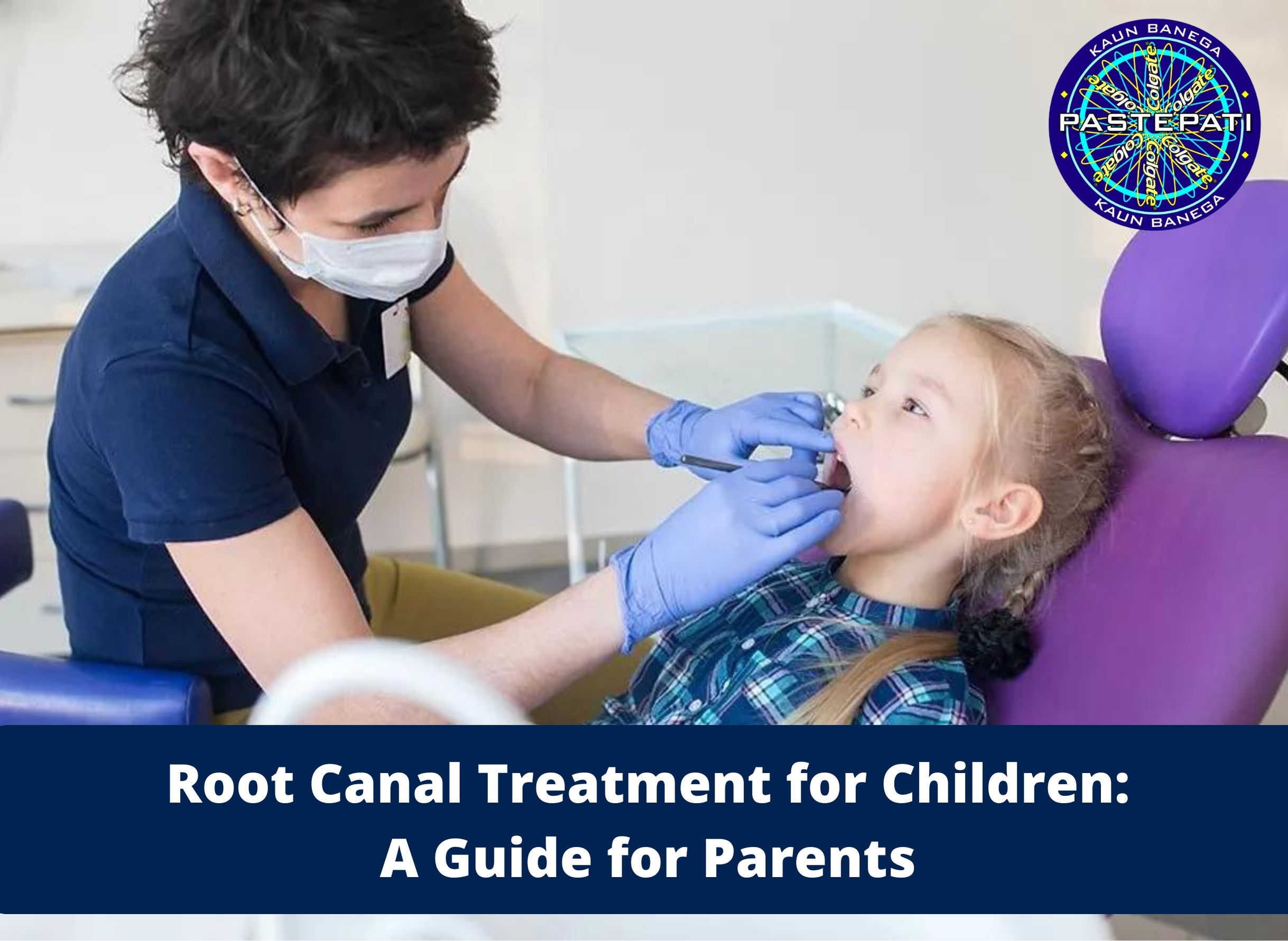Kaun Banega Pastepasti, under the guidance of Dr. Thind, stands as a beacon of comprehensive dental care in Ludhiana. Root canal treatment, though commonly associated with adults, is sometimes necessary for children to preserve the health of their teeth. As a parent, understanding what this procedure entails can alleviate concerns and help you navigate the process smoothly. In this article, we will delve into the specifics of root canal procedures for children, providing you with essential information to support your child’s dental health journey.
Read: Choosing the Best Toothbrush and Toothpaste: A Complete Guide
Understanding Root Canal Treatment for Children:
Root canal treatment, also known as endodontic therapy, becomes necessary when the pulp inside a tooth becomes infected or damaged. Contrary to popular belief, this procedure is not as daunting as it may seem, especially with advancements in dental techniques and technology.
1. Signs Your Child May Need a Root Canal:
Persistent toothache, sensitivity to hot or cold, swelling or tenderness in the gums, and discoloration of the affected tooth are common indicators that your child may require a root canal. If you notice any of these signs, it’s essential to schedule an appointment with Kaun Banega Pastepasti for a thorough examination.
2. The Procedure Explained:
Root canal treatment, also known as endodontic therapy, is a dental procedure aimed at saving a tooth that has been severely damaged or infected. Here’s a step-by-step breakdown of what happens during a root canal procedure:
Read: Getting Your Child Ready for Their First Dental Appointment
Assessment and Preparation: Before the procedure begins, your child’s dentist at Kaun Banega Pastepasti will conduct a thorough examination of the affected tooth, including X-rays to assess the extent of damage and determine the need for treatment. To guarantee your child’s comfort throughout the process, local anesthesia is given.
Accessing the Pulp: Once your child is numbed, the dentist creates a small opening in the crown of the tooth to access the pulp chamber, where the infected or damaged pulp is located. This step is crucial for removing the source of infection and preventing its spread to surrounding tissues.
Removing the Infected Pulp: Using specialized instruments, the dentist carefully removes the infected or damaged pulp tissue from the interior of the tooth. This process is essential for eliminating bacteria and debris that can cause pain, swelling, and further damage if left untreated.
Cleaning and Disinfecting: After the infected pulp is removed, the dentist thoroughly cleans and disinfects the inside of the tooth and its root canals. This helps eliminate any remaining bacteria and reduces the risk of reinfection.
Filling and Sealing: Once the tooth is cleaned and disinfected, the dentist fills the empty pulp chamber and root canals with a biocompatible material called gutta-percha. This material seals off the root canal space, preventing bacteria from re-entering and causing infection. The tooth is then sealed with a temporary or permanent filling to restore its structure and function.
Restoration: In some cases, a tooth that has undergone a root canal may require additional restoration, such as a dental crown, to strengthen and protect it from further damage. Your child’s dentist will discuss the need for any additional treatment and provide personalized recommendations based on their specific situation.
Read: Interactive Activities for Tiny Teeth: Nurturing Healthy Smiles
Follow-Up Care: After the root canal procedure is completed, your child will be given instructions for post-treatment care, including how to manage any discomfort and maintain good oral hygiene. It’s essential to follow these instructions carefully to ensure proper healing and the long-term success of the treatment.
3. Sedation and Comfort Measures:
As the best dental clinic in Ludhiana, our team prioritizes your child’s comfort and safety throughout the procedure. Depending on your child’s age and level of anxiety, sedation options such as nitrous oxide (laughing gas) or oral sedation may be offered to help them relax during treatment. Our compassionate staff will ensure your child feels at ease and experiences minimal discomfort.
4. Post-Treatment Care:
Following a root canal, your child may experience some mild discomfort or sensitivity, which can usually be managed with over-the-counter pain medication. Encourage your child to maintain good oral hygiene habits, including brushing twice daily and flossing, to promote healing and prevent further issues.
Read: Oral Care for Different Life Stages: From Kids to Seniors
Conclusion
Kaun Banega Pastepasti is committed to providing exceptional dental care in Ludhiana, including root canal procedures when necessary. By understanding the process and partnering with our experienced team, you can navigate root canal treatment for your child with confidence and peace of mind. Remember, early intervention and proper dental care are key to ensuring your child enjoys a lifetime of healthy smiles. Schedule a consultation with us today to discuss any concerns you may have and take proactive steps towards your child’s dental well-being.




